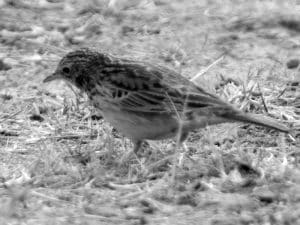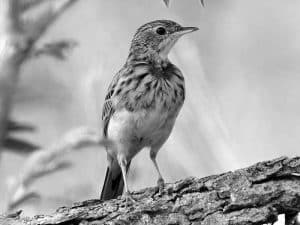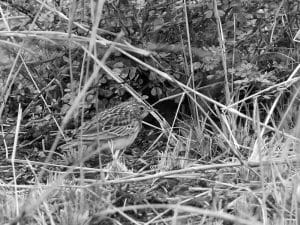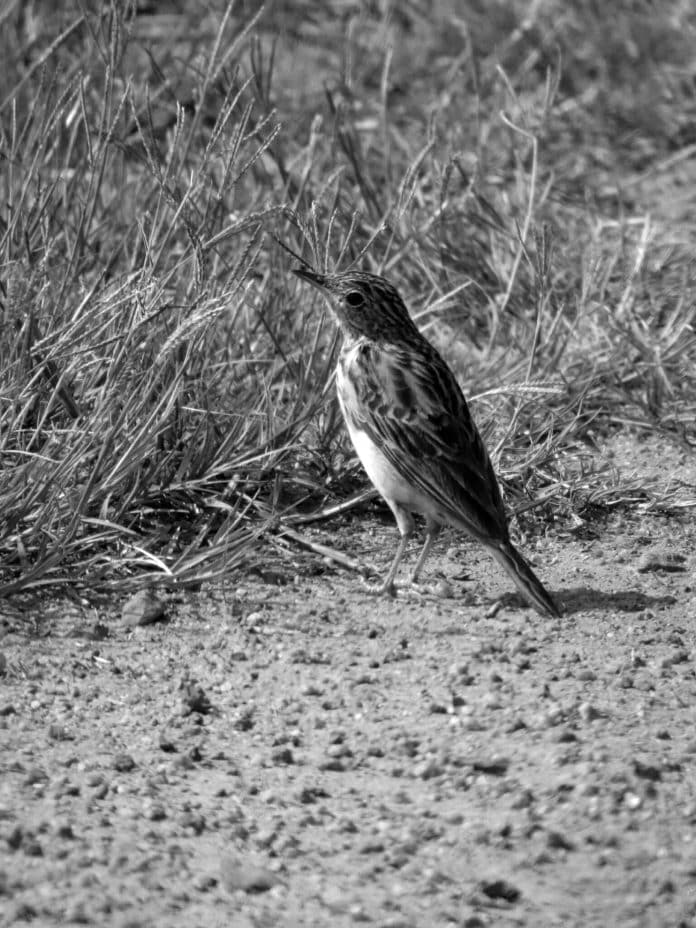Introduction to the Bush Pipit
Tucked away in the vast and diverse landscapes of Tanzania, a diminutive yet captivating bird species thrives – the bush pipit. This ground-dwelling avian specialist has adapted to the unique ecological niches of the region, making it an integral part of Tanzania’s rich biodiversity. As a birdwatcher or nature enthusiast, delving into the world of the bush pipit in Tanzania offers a glimpse into the intricate web of life that underpins the country’s natural wonders.

In this comprehensive article, we will embark on a journey to uncover the fascinating insights into the bush pipit, exploring its habitat, physical characteristics, behavior, and the vital role it plays in Tanzania’s ecosystem. Whether you’re a seasoned birder or simply curious about the wonders of the natural world, this article will provide you with a deeper understanding and appreciation for this remarkable avian species.
Habitat and Distribution of the Bush Pipit in Tanzania
The bush pipit, scientifically known as Anthus caffer, is a ground-dwelling bird species that thrives in the diverse landscapes of Tanzania. Its preferred habitats include:
- Grasslands and Savannas:
- The bush pipit is well-adapted to the expansive grasslands and savannas that dominate much of Tanzania’s landscape.
- These open, grassy areas provide the perfect environment for the pipit’s ground-foraging behavior and nesting requirements.
- Scrublands and Shrubby Areas:
- In addition to grasslands, the bush pipit can also be found in areas with a mix of low-growing vegetation, such as scrublands and shrubby habitats.
- These transitional zones between open spaces and denser vegetation offer the pipit a range of foraging and nesting opportunities.
- Arid and Semi-Arid Regions:
- The bush pipit’s resilience extends to the drier, arid and semi-arid regions of Tanzania, where it has adapted to the harsher environmental conditions.
- These areas, characterized by sparse vegetation and lower rainfall, provide a unique habitat for the pipit to thrive.
Throughout its range in Tanzania, the bush pipit can be found in various protected areas, national parks, and wildlife reserves, including the Serengeti National Park, Tarangire National Park, and Ngorongoro Conservation Area. Its widespread distribution across the country’s diverse landscapes highlights the species’ adaptability and the importance of preserving these critical habitats for its continued survival.
Physical Characteristics and Behavior of the Bush Pipit
The bush pipit is a small, ground-dwelling bird with a distinctive appearance and unique behavioral traits. Let’s delve into the details:
Physical Characteristics:
- Size: The bush pipit is a relatively small bird, measuring around 14-16 centimeters (5.5-6.3 inches) in length.
- Plumage: The pipit’s plumage is primarily brown or olive-brown in color, with a paler belly and faint streaking on the back and wings.
- Beak: The pipit has a slender, pointed beak, well-suited for foraging on the ground.
- Legs: Its legs are long and slender, adapted for walking and hopping on the ground.
Behavioral Characteristics:
- Ground-dwelling: As the name suggests, the bush pipit is a ground-dwelling species, spending the majority of its time on the ground, foraging and nesting.
- Foraging: The pipit uses its sharp beak to search for insects, spiders, and other small invertebrates in the grass and soil.
- Nesting: The pipit builds its nest on the ground, often concealed in dense vegetation or under a bush, using grasses, stems, and other plant materials.
- Flight: When disturbed, the pipit takes flight, but its flight is typically low and undulating, with rapid wing beats.
- Vocalizations: The bush pipit has a variety of calls, including a distinctive “tseep” or “tsip” sound, used for communication and territorial defense.
The bush pipit’s physical characteristics and behavioral adaptations make it well-suited to thrive in the diverse habitats of Tanzania, where it plays a crucial role in the local ecosystem.
Diet and Feeding Habits of the Bush Pipit
The bush pipit is an opportunistic feeder, taking advantage of the abundant invertebrate prey found in its grassland and scrubland habitats. Let’s explore its dietary preferences and feeding habits in more detail:
Diet Composition:
- Insects: The bush pipit’s primary food source consists of a variety of insects, including beetles, grasshoppers, ants, and caterpillars.
- Spiders: Spiders also make up an important part of the pipit’s diet, providing a valuable source of protein and nutrients.
- Other Invertebrates: The pipit may also consume other small invertebrates, such as crickets, termites, and small mollusks.
Foraging Behavior:
- Ground-Foraging: As a ground-dwelling species, the bush pipit spends the majority of its time foraging on the ground, using its sharp beak to search for and capture prey.
- Hopping and Walking: The pipit’s long legs allow it to hop and walk across the ground, carefully scanning the vegetation and soil for potential food sources.
- Gleaning: The pipit employs a foraging technique known as “gleaning,” where it plucks insects and other invertebrates directly from the ground or low-growing vegetation.
- Opportunistic Feeding: The bush pipit is adaptable and will take advantage of any available food sources, including insects flushed out by grazing animals or disturbances in the habitat.
Feeding Adaptations:
- Specialized Beak: The pipit’s slender, pointed beak is well-suited for probing the ground and capturing small invertebrate prey.
- Agility: The pipit’s nimble movements and quick reflexes allow it to efficiently navigate the ground and catch its prey.
- Versatility: The bush pipit’s diverse diet and foraging strategies enable it to thrive in a variety of grassland and scrubland habitats, ensuring its survival in Tanzania’s dynamic ecosystems.
By understanding the bush pipit’s dietary preferences and feeding habits, we can appreciate the species’ important role in maintaining the balance and health of Tanzania’s ground-dwelling invertebrate populations.
Breeding and Reproduction of the Bush Pipit

The breeding and reproductive strategies of the bush pipit are an integral part of its life cycle and adaptation to the Tanzanian environment. Let’s delve into the details:
Breeding Season:
- The bush pipit’s breeding season typically coincides with the onset of the rainy season in Tanzania, which can vary depending on the region.
- Generally, the peak breeding period occurs during the long rains, typically from March to May, when environmental conditions are most favorable for nesting and raising young.
Nesting Behavior:
- Nest Construction: The bush pipit builds its nest on the ground, often concealed in dense vegetation or under a bush, using a variety of materials such as grasses, stems, and leaves.
- Nest Placement: The nest is typically well-camouflaged and situated in a location that provides protection from predators and the elements.
- Clutch Size: The female bush pipit lays a clutch of 2-4 eggs, which are incubated for approximately 12-14 days.
Parental Care:
- Incubation: Both the male and female bush pipit take turns incubating the eggs, ensuring the successful development of the chicks.
- Chick Rearing: Once the chicks hatch, both parents actively participate in feeding and caring for the young, providing them with a steady supply of insects and other invertebrates.
- Fledgling Period: The bush pipit chicks remain with their parents for several weeks after hatching, learning essential survival skills before eventually becoming independent.
Breeding Adaptations:
- Timing: The bush pipit’s breeding season is timed to coincide with the rainy season, when food resources are more abundant and environmental conditions are favorable for nesting and chick-rearing.
- Nest Concealment: The well-camouflaged and ground-based nesting strategy of the bush pipit helps to protect the eggs and chicks from predators and harsh environmental conditions.
- Parental Cooperation: The shared parental responsibilities between the male and female bush pipit ensure the successful rearing of their offspring, increasing the chances of survival and perpetuating the species.
By understanding the breeding and reproductive strategies of the bush pipit, we can appreciate the species’ resilience and adaptability within the Tanzanian ecosystem.
Conservation Status and Threats to the Bush Pipit in Tanzania
The bush pipit, despite its widespread distribution in Tanzania, faces a range of threats that can impact its long-term survival. Let’s explore the conservation status and the primary challenges the species faces:
Conservation Status:
- The International Union for Conservation of Nature (IUCN) currently lists the bush pipit as a species of “Least Concern.”
- This classification indicates that the species is not considered to be at a high risk of extinction in the near future, based on its current population size and distribution.
Threats to the Bush Pipit:
- Habitat Loss and Degradation:
- The expansion of human activities, such as agriculture, urbanization, and livestock grazing, can lead to the loss and fragmentation of the bush pipit’s grassland and scrubland habitats.
- Overgrazing and unsustainable land-use practices can also degrade the quality of the pipit’s preferred habitats.
- Climate Change:
- Shifts in temperature and precipitation patterns due to climate change can alter the availability of food resources and suitable nesting sites for the bush pipit.
- Extreme weather events, such as droughts and floods, can also directly impact the pipit’s breeding success and survival.
- Predation:
- The bush pipit’s ground-dwelling nature makes it vulnerable to predation by a variety of species, including snakes, small mammals, and birds of prey.
- Increased human activity and the presence of domestic animals in the pipit’s habitat can also introduce new predators and increase the risk of predation.
- Pesticide and Pollution:
- The use of pesticides and other agrochemicals in the pipit’s habitat can have detrimental effects on the species, either through direct poisoning or the depletion of its insect prey.
- Environmental pollution, such as the contamination of water sources, can also indirectly impact the bush pipit’s health and survival.
Conservation Efforts:
- Ongoing monitoring and research: Efforts are being made to better understand the bush pipit’s population trends, habitat requirements, and the impact of various threats on the species.
- Habitat protection and restoration: Initiatives to protect and restore the grassland and scrubland habitats that the bush pipit relies on are crucial for its long-term conservation.
- Sustainable land-use practices: Promoting sustainable agriculture, grazing, and land-use management can help mitigate the threats of habitat loss and degradation.
- Environmental education and awareness: Educating local communities and stakeholders about the importance of the bush pipit and its role in the ecosystem can foster support for conservation efforts.
By addressing the key threats and implementing effective conservation strategies, we can ensure the continued presence of the bush pipit in Tanzania’s diverse and vibrant ecosystems.
Research and Monitoring Efforts for the Bush Pipit
Ongoing research and monitoring initiatives are crucial for understanding the status, ecology, and conservation needs of the bush pipit in Tanzania. Let’s explore some of the key efforts in this regard:
Population Surveys and Monitoring:
- Regular population surveys are conducted to track the abundance and distribution of the bush pipit across its range in Tanzania.
- These surveys help researchers and conservationists monitor population trends and identify any potential declines or changes in the species’ status.
Habitat Assessments:
- Researchers are actively studying the bush pipit’s habitat requirements, including the preferred vegetation structure, soil composition, and other environmental factors that contribute to its survival.
- These habitat assessments help inform land-use planning and conservation strategies to protect the pipit’s critical ecosystems.
Breeding and Reproductive Studies:
- Researchers are investigating the breeding biology and reproductive success of the bush pipit, including nest site selection, clutch size, and chick survival rates.
- This information is essential for understanding the species’ life history and identifying any potential threats to its breeding success.
Dietary and Foraging Analyses:
- Studies are being conducted to examine the bush pipit’s dietary preferences and foraging behavior, providing insights into its role within the local ecosystem.
- These analyses help researchers understand the pipit’s ecological relationships and the potential impacts of changes in food availability or habitat quality.
Genetic and Demographic Analyses:
- Genetic studies and demographic analyses are being carried out to assess the bush pipit’s population structure, genetic diversity, and connectivity between different subpopulations.
- This information is crucial for developing effective conservation strategies and identifying any potential threats to the species’ long-term viability.
Collaboration and Data Sharing:
- Researchers and conservation organizations are working together to share data, coordinate monitoring efforts, and develop integrated strategies for the protection of the bush pipit and its habitat.
- This collaborative approach ensures a comprehensive understanding of the species’ status and the implementation of targeted conservation actions.
By supporting and participating in these research and monitoring initiatives, birdwatchers, nature enthusiasts, and local communities can contribute to the ongoing efforts to safeguard the bush pipit and its crucial role in Tanzania’s diverse ecosystems.
Tips for Birdwatching and Spotting the Bush Pipit in Tanzania

For birdwatchers and nature enthusiasts visiting Tanzania, the opportunity to observe the elusive and fascinating bush pipit in its natural habitat can be a truly rewarding experience. Here are some tips to help you increase your chances of spotting this ground-dwelling avian specialist:
- Choose the Right Locations:
- Focus your birdwatching efforts in areas known for their healthy populations of bush pipits, such as the grasslands and scrublands of Tanzania’s national parks and wildlife reserves.
- Some of the best spots to look for the bush pipit include the Serengeti National Park, Tarangire National Park, and the Ngorongoro Conservation Area.
- Time your Visits Strategically:
- The bush pipit is most active during the early morning and late afternoon hours, when it is actively foraging and engaging in other behaviors.
- Plan your birdwatching outings to coincide with these peak activity periods for the best chances of spotting the pipit.
- Adopt a Quiet and Cautious Approach:
- The bush pipit is a relatively shy and ground-dwelling species, so it’s important to move quietly and slowly through its habitat to avoid startling it.
- Use binoculars or a spotting scope to observe the pipit from a distance, as it may be easily spooked by sudden movements or loud noises.
- Look for Telltale Signs:
- Keep an eye out for the pipit’s characteristic hopping and walking movements on the ground, as well as its distinctive call, a “tseep” or “tsip” sound.
- Scan the ground and low-growing vegetation for the pipit’s well-camouflaged nest or the presence of the bird itself.
- Be Patient and Persistent:
- Spotting the bush pipit can sometimes require a bit of patience and persistence, as it can be elusive and well-hidden in its habitat.
- Remain calm and continue scanning the area, as the pipit may eventually emerge or reveal itself with its characteristic behaviors.
- Utilize Local Expertise:
- Consider hiring the services of a knowledgeable local guide or joining a birdwatching tour, as they can provide valuable insights and increase your chances of spotting the bush pipit.
- Tap into the expertise of local birding communities and conservation organizations to stay informed about the latest sightings and best practices for observing the pipit.
By following these tips and embracing the thrill of the hunt, you’ll be well on your way to enjoying a memorable encounter with Tanzania’s ground-dwelling avian specialist, the bush pipit.
Other Ground-Dwelling Avian Species in Tanzania’s Ecosystem
While the bush pipit is a unique and fascinating ground-dwelling bird species, it is not the only one found in Tanzania’s diverse ecosystems. Let’s take a brief look at some other ground-dwelling avian species that you may encounter during your birdwatching adventures:
- Rufous-naped Lark (Mirafra africana):
- A common resident of grasslands and savannas, the rufous-naped lark is known for its distinctive head markings and melodious song.
- Temminck’s Courser (Cursorius temminckii):
- This ground-dwelling wader is found in arid and semi-arid regions, often seen running and foraging on the open ground.
- Kori Bustard (Ardeotis kori):
- The world’s heaviest flying bird, the kori bustar ## Other Ground-Dwelling Avian Species in Tanzania’s Ecosystem (continued)
Kori bustard (Ardeotis kori) is the world’s heaviest flying bird, found in the savannas and grasslands of Tanzania. These large, ground-dwelling birds are known for their impressive size, standing up to 1.5 meters tall, and their distinctive courtship displays.
Another notable ground-dwelling species is the Yellow-throated Sandgrouse (Pterocles gutturalis), which inhabits the arid and semi-arid regions of the country. These ground-dwelling birds are well-adapted to the harsh conditions, using their specialized bills to extract water from succulent plants and their cryptic plumage to blend seamlessly into the surrounding landscape.
The Secretarybird (Sagittarius serpentarius) is a unique and iconic ground-dwelling raptor found in Tanzania’s savannas and open woodlands. These large, long-legged birds are known for their distinctive crested head and their unique hunting behavior, which involves stalking and stamping on their prey.
The Crested Francolin (Dendroperdix sephaena) is a ground-dwelling gamebird that can be spotted in a variety of habitats, including woodlands, thickets, and grasslands. These birds are known for their distinctive calls and their tendency to run rather than take flight when disturbed.
Finally, the Coqui Francolin (Peliperdix coqui) is another ground-dwelling gamebird found in Tanzania’s savannas and scrublands. These small, cryptic birds are often difficult to spot, but their distinctive calls can help birders locate them in their preferred habitats.
Each of these ground-dwelling avian species plays a vital role in the delicate balance of Tanzania’s diverse ecosystems, contributing to the country’s rich biodiversity and the intricate web of life that sustains it.
Conclusion: Appreciating the Importance of the Bush Pipit in Tanzania’s Biodiversity
As we’ve explored in this comprehensive article, the bush pipit is a remarkable and resilient ground-dwelling bird species that is an integral part of Tanzania’s vibrant ecosystems. From its unique physical characteristics and adaptations to its crucial role in the local food web, the bush pipit’s story is one that deserves our attention and appreciation.
By understanding the threats facing the bush pipit and the ongoing efforts to conserve it, we can all play a role in ensuring the continued presence of this avian specialist in Tanzania’s diverse landscapes. Whether you are a seasoned birdwatcher, a nature enthusiast, or simply someone who appreciates the wonders of the natural world, your support and participation in conservation initiatives can make a meaningful difference.
As you continue your journey through Tanzania’s natural wonders, keep a keen eye out for the elusive bush pipit and the many other ground-dwelling avian species that call this remarkable country home. Your observations and experiences can contribute to the growing body of knowledge about these fascinating creatures, helping to inform and guide future conservation efforts. Join us in celebrating the biodiversity of Tanzania and the vital role that the bush pipit plays in maintaining the delicate balance of its ecosystems.

































